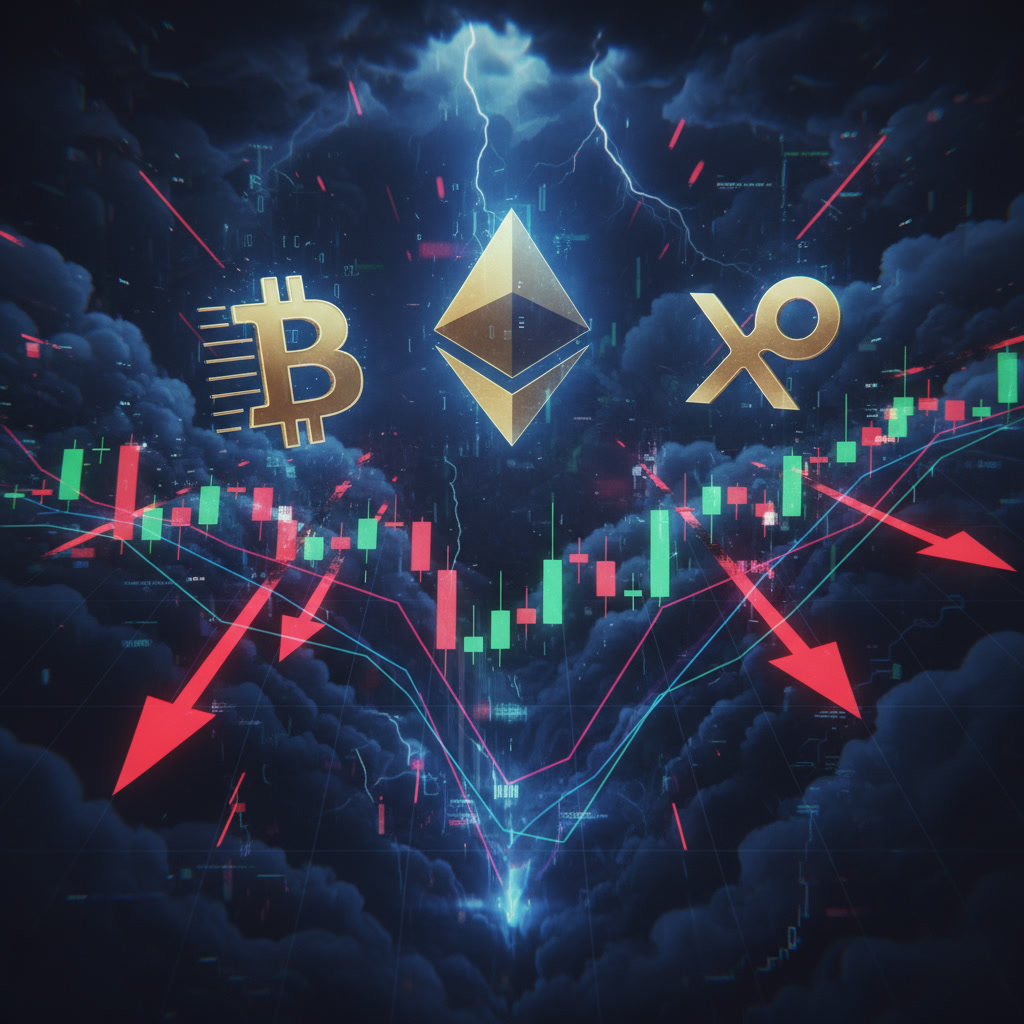The Future of Finance Beyond Borders: A Comprehensive Exploration
In 2025, the financial landscape is undergoing a profound transformation, driven by technological innovation, globalization, and evolving regulatory frameworks. The concept of finance “beyond borders” is no longer a futuristic vision but an emerging reality reshaping how individuals, businesses, and governments interact economically. This expanded article delves into the key drivers, technologies, challenges, and opportunities shaping the future of cross-border finance, highlighting the role of cryptocurrencies, blockchain, decentralized finance (DeFi), and regulatory harmonization in creating a more inclusive, efficient, and transparent global financial system.

1. The Evolution of Cross-Border Finance
Historically, cross-border financial transactions have been fraught with inefficiencies, high costs, delays, and regulatory complexities. Traditional banking systems rely on intermediaries, correspondent banks, and legacy infrastructures that often result in slow settlement times and opaque fee structures. Moreover, currency conversion, compliance with multiple jurisdictions, and geopolitical risks add layers of complexity.
The rise of digital technologies and the internet has catalyzed a shift toward more seamless global financial interactions. Today, cross-border payments, investments, and capital flows are increasingly facilitated by fintech innovations, digital currencies, and blockchain-based platforms, enabling near-instantaneous transfers with greater transparency and lower costs.
2. Cryptocurrencies and Blockchain: Catalysts for Borderless Finance
Cryptocurrencies as Global Mediums of Exchange
Cryptocurrencies like Bitcoin, Ethereum, and emerging stablecoins have introduced a new paradigm for transferring value across borders without relying on traditional financial intermediaries. Their decentralized nature allows peer-to-peer transactions that are faster, cheaper, and accessible to unbanked populations worldwide.
Stablecoins-cryptocurrencies pegged to fiat currencies-play a pivotal role in mitigating volatility, making them practical for everyday cross-border payments, remittances, and business transactions. For example, USDT, USDC, and emerging central bank digital currencies (CBDCs) offer the stability and regulatory oversight needed to bridge traditional finance with blockchain ecosystems.
Blockchain’s Role in Transparency and Efficiency
Blockchain technology underpins cryptocurrencies and offers a decentralized ledger that ensures immutability, transparency, and security. By enabling real-time settlement and reducing the need for intermediaries, blockchain streamlines cross-border transactions and trade finance.
Smart contracts-self-executing contracts with coded terms-automate compliance, payments, and settlements, reducing errors and fraud. Platforms like RippleNet and IBM’s Blockchain World Wire exemplify how blockchain can revolutionize correspondent banking and cross-border payment systems.
3. Decentralized Finance (DeFi): Democratizing Global Financial Services
DeFi platforms built on blockchain networks provide decentralized lending, borrowing, trading, and asset management services without traditional gatekeepers. These platforms offer borderless access to financial products, enabling anyone with an internet connection to participate in global finance.
In 2025, DeFi continues to expand, integrating with traditional finance and offering innovative solutions such as tokenized assets, decentralized exchanges (DEXs), and yield farming. DeFi’s permissionless nature fosters financial inclusion, especially in regions with limited banking infrastructure.
4. The Rise of Central Bank Digital Currencies (CBDCs)
Governments worldwide are exploring or launching CBDCs to modernize payment systems and maintain monetary sovereignty in a digital economy. CBDCs promise faster, cheaper cross-border payments, enhanced transparency, and improved financial inclusion.
Collaborative initiatives like the m-CBDC Bridge project between the Bank of Thailand and the Hong Kong Monetary Authority demonstrate how CBDCs can facilitate cross-border settlements efficiently while complying with regulatory standards.
5. Regulatory Harmonization and Compliance Challenges
While technological advancements enable borderless finance, regulatory fragmentation remains a significant hurdle. Different countries have varying rules on anti-money laundering (AML), know-your-customer (KYC), data privacy, and taxation.
Efforts toward international regulatory harmonization, such as the Financial Action Task Force (FATF) guidelines on virtual assets and the EU’s Markets in Crypto-Assets (MiCA) framework, aim to create consistent standards that protect consumers and prevent illicit activities without stifling innovation.
6. Opportunities and Risks in the Future of Borderless Finance
Opportunities
-
Financial Inclusion: Digital and decentralized finance can bring banking and investment services to billions globally who lack access to traditional financial institutions.
-
Cost Reduction: Eliminating intermediaries and automating processes reduce transaction costs and increase efficiency.
-
Innovation: New financial products, programmable money, and tokenized assets open avenues for investment and economic growth.
-
Transparency and Security: Blockchain’s immutable ledgers enhance trust and reduce fraud.
Risks
-
Cybersecurity Threats: Increased digitalization exposes financial systems to hacking, fraud, and operational risks.
-
Regulatory Uncertainty: Inconsistent regulations can create compliance challenges and legal risks.
-
Privacy Concerns: Balancing transparency with user privacy remains complex.
-
Technological Barriers: Infrastructure gaps and digital literacy affect adoption in developing regions.
7. Case Studies: Real-World Applications of Borderless Finance
-
Remittances: Platforms like Stellar and Ripple enable near-instant, low-cost remittances, transforming how migrant workers send money home.
-
Trade Finance: Blockchain consortia such as Marco Polo Network digitize trade documents and payments, reducing delays and fraud.
-
Cross-Border Lending: DeFi protocols facilitate peer-to-peer lending across countries without traditional credit checks.
-
Tokenized Real Estate: Fractional ownership of international properties becomes accessible through blockchain tokenization.
8. Preparing for a Borderless Financial Future
To thrive in the evolving global financial ecosystem, individuals and businesses should:
-
Embrace Digital Wallets and Crypto Payments: Adopt secure wallets and familiarize themselves with digital currencies.
-
Stay Informed on Regulatory Developments: Monitor changes in laws affecting cross-border transactions and crypto assets.
-
Leverage DeFi and Blockchain Solutions: Explore decentralized platforms for financing, investing, and payments.
-
Prioritize Security: Implement robust cybersecurity measures to protect digital assets.
-
Engage with Global Financial Networks: Build partnerships and networks that facilitate international transactions and compliance.
Conclusion
The future of finance beyond borders is unfolding rapidly, driven by innovations in cryptocurrencies, blockchain, DeFi, and digital currencies issued by central banks. These technologies promise a more inclusive, efficient, and transparent global financial system that transcends traditional geographic and institutional boundaries.
However, realizing this vision requires overcoming regulatory challenges, enhancing cybersecurity, and ensuring equitable access. By understanding these dynamics and embracing new financial paradigms, individuals, businesses, and governments can position themselves at the forefront of the borderless financial revolution in 2025 and beyond.
References:
-
World Economic Forum: The Future of Financial Infrastructure (2025)
-
International Monetary Fund: Digital Currencies and Cross-Border Payments (2025)
-
Financial Action Task Force (FATF) Guidelines on Virtual Assets
-
Stellar Development Foundation: Blockchain for Remittances
-
RippleNet: Transforming Cross-Border Payments
-
EU Markets in Crypto-Assets (MiCA) Regulation Overview
-
DeFi Pulse: Trends in Decentralized Finance (2025)
Ready to start your cryptocurrency journey?
If you’re interested in exploring the world of crypto trading, here are some trusted platforms where you can create an account:
- Binance – The world’s largest cryptocurrency exchange by volume.
- Bybit – A top choice for derivatives trading with an intuitive interface.
- OKX – A comprehensive platform featuring spot, futures, DeFi, and a powerful Web3 wallet.
- KuCoin – Known for its vast selection of altcoins and user-friendly mobile app.
These platforms offer innovative features and a secure environment for trading and learning about cryptocurrencies. Join today and start exploring the opportunities in this exciting space!

Join our crypto community for news, discussions, and market updates: CryptoBCC on Telegram.

Disclaimer: Always do your own research (DYOR) and ensure you understand the risks before making any financial decisions.




